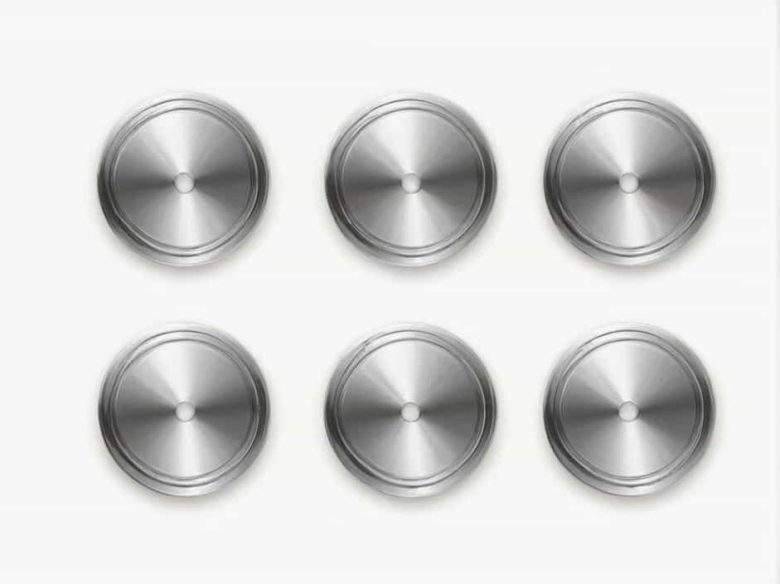Iron and steel are widely used in construction automotive and manufacturing industries. However one major drawback of iron is its tendency to rust when exposed to moisture and oxygen. To protect iron from corrosion a process called galvanization is used.
The metal commonly used for galvanization is zinc. This process involves coating iron or steel with a thin layer of zinc to prevent rusting and increase durability. In this topic we will explore the role of zinc in galvanization its properties the galvanization process and its benefits.
What is Galvanization?
Galvanization is a process where a protective zinc coating is applied to iron or steel to prevent rusting. The zinc layer acts as a barrier preventing air and moisture from coming into direct contact with the underlying metal.
Why is Zinc Used for Galvanization?
Zinc is the preferred metal for galvanization because of its corrosion resistance and sacrificial properties. When zinc is exposed to air it forms a thin protective layer of zinc oxide that prevents further oxidation.
Additionally even if the zinc coating gets scratched or damaged zinc continues to protect the exposed iron through a process called cathodic protection. In this process zinc corrodes preferentially sacrificing itself to protect the underlying iron.
The Properties of Zinc That Make It Ideal for Galvanization
- High Corrosion Resistance – Zinc forms a protective oxide layer that prevents rust formation.
- Sacrificial Protection – Zinc protects iron even when the coating is damaged.
- Strong Adhesion – Zinc adheres well to iron and steel surfaces ensuring long-term protection.
- Durability – Zinc coatings can last several decades even in harsh environments.
- Low Cost – Zinc is an economical and widely available metal for corrosion protection.
Types of Galvanization Processes
There are several methods used to galvanize iron and steel. The most common ones include:
1. Hot-Dip Galvanization
Hot-dip galvanization is the most widely used method for applying a zinc coating. It involves dipping iron or steel into molten zinc at a temperature of around 450°C (840°F).
Steps in Hot-Dip Galvanization:
- Surface Cleaning – The metal is cleaned with acid to remove rust and impurities.
- Fluxing – A flux solution is applied to prevent oxidation before dipping.
- Zinc Bath – The metal is submerged in molten zinc forming a protective layer.
- Cooling and Inspection – The coated metal is cooled and inspected for uniform coverage.
Advantages of Hot-Dip Galvanization:
✔ Provides a thick durable coating.
✔ Can withstand harsh weather conditions.
✔ Offers long-lasting protection up to 50 years in some environments.
2. Electro-Galvanization
Electro-galvanization uses an electrochemical process to coat the metal with a thin layer of zinc. This method is commonly used for automotive parts electrical appliances and small components.
Process of Electro-Galvanization:
- The iron or steel is placed in a zinc electrolyte solution.
- An electric current is passed through depositing a thin zinc layer on the surface.
Advantages of Electro-Galvanization:
✔ Produces a smooth uniform finish.
✔ Ideal for precision parts and decorative applications.
✔ Less expensive than hot-dip galvanization.
3. Sherardizing (Thermal Diffusion Galvanization)
This method involves heating iron or steel in a sealed drum with zinc powder. The zinc vapor diffuses onto the metal surface forming a protective layer.
Advantages of Sherardizing:
✔ Provides even coverage on complex-shaped objects.
✔ Suitable for nuts bolts and small metal parts.
Applications of Galvanized Iron and Steel
Galvanized iron and steel are widely used in various industries due to their durability and resistance to rust. Some common applications include:
1. Construction and Infrastructure
Galvanized steel is used in bridges highways roofing and structural beams because it can withstand exposure to rain humidity and extreme temperatures.
2. Automotive Industry
Car manufacturers use electro-galvanized steel for body panels frames and undercarriages to prevent corrosion and extend vehicle lifespan.
3. Household Appliances
Many kitchen appliances washing machines and air conditioners contain galvanized steel components for added durability.
4. Agricultural Equipment
Farm tools water tanks and fencing are often made from galvanized steel to prevent rusting in outdoor environments.
5. Water Pipes and Plumbing
Galvanized iron pipes are commonly used in water supply systems because they resist rust and increase pipe longevity.
Advantages of Galvanization
Using zinc-coated iron or steel provides several benefits:
✅ Rust and Corrosion Resistance – The zinc layer prevents oxidation and rust formation.
✅ Long Lifespan – Galvanized metals can last 30 to 50 years in outdoor conditions.
✅ Low Maintenance – No need for frequent painting or additional coatings.
✅ Cost-Effective – Cheaper than stainless steel but offers long-term protection.
✅ Eco-Friendly – Zinc is a recyclable material reducing environmental impact.
Comparison Between Galvanized Iron and Stainless Steel
Some people confuse galvanized iron with stainless steel but they are different materials. Here’s a comparison:
| Feature | Galvanized Iron (Zinc-Coated) | Stainless Steel (Chromium Alloy) |
|---|---|---|
| Rust Resistance | Good (Zinc layer protects against rust) | Excellent (Chromium prevents oxidation) |
| Durability | Long-lasting but may wear over time | Extremely durable and corrosion-resistant |
| Cost | More affordable | More expensive |
| Weight | Lighter | Heavier |
| Applications | Construction automotive household appliances | Medical tools marine equipment high-end kitchenware |
The metal used for galvanization of iron is zinc which provides excellent corrosion resistance and durability. The hot-dip electro-galvanization and sherardizing processes ensure that iron and steel remain rust-free for decades.
Galvanized metals are essential in construction automotive and household applications offering a cost-effective long-lasting solution to rust prevention. By using zinc coatings industries can extend the life of their products while reducing maintenance costs.



